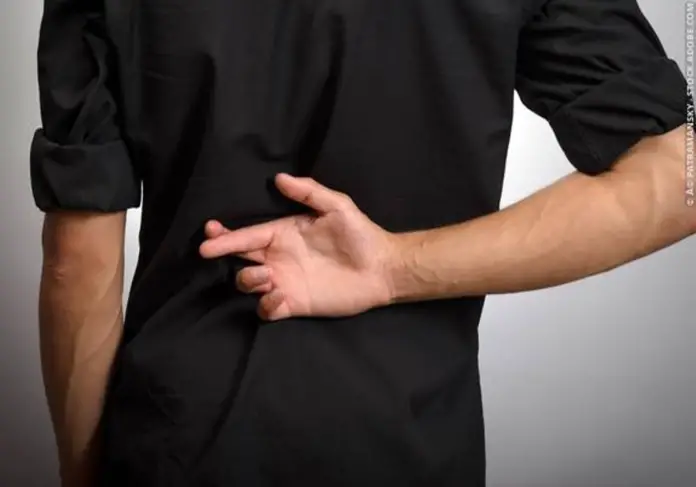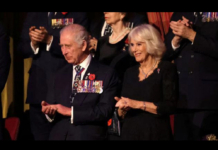To determine whether someone is speaking truthfully or lying, there are various methods commonly employed. Traditional approaches involve observing the person’s body language, eye movements, tone of voice, and fluency or hesitations in their speech during a conversation, to assess their veracity or deception.
With the progression of technology, modern techniques have emerged for detecting deception, which involves the use of computerized machines.
Difference between truth and lies:
After conducting thorough research, experts at Amsterdam University have identified simple and effective methods that can provide an estimate of up to 80% accuracy in determining whether someone is speaking the truth or engaging in deception.
Warning signs:
During their research, the experts emphasized the importance of focusing on the individual being questioned during the conversation. It is crucial to observe whether the person exhibits signs of nervousness, restlessness, or complete confidence.
How to identify a dishonest person?
A recent study published in the magazine “Nature of Human Behavior” indicates that a possible way to identify a dishonest person is through a series of questions about the details, including “what, when, how, and why.” If the person hesitates or takes time to respond to these inquiries, it may suggest that they are being untruthful. On the other hand, if they provide immediate and confident answers without any pause, there is a chance that they are telling the truth.
Traditional beliefs about the innocent and criminals:
Psychologist and author Bruno Verschuere explain that people hold different perspectives and stereotypes about innocent individuals and criminals. However, these perspectives are not entirely accurate to provide definitive conclusions about them.
Bruno Verschuere, along with fellow researchers, conducted experiments involving 1,445 participants. The findings revealed that the information obtained about the activities of students on the university campus was not completely reliable.
The researchers concluded that participants who relied on conscience or traditional appearance and stereotypes did not perform better in determining lies.
Attention to detail:
However, individuals who paid attention to details and specifics achieved an accuracy rate ranging from 59% to 79% in determining the truth.
The researchers suggest that focusing on solid and verifiable information yields better results, rather than relying on unnecessary and extraneous factors.
Revealing deception is not an easy task. A recent research study found that, after a lengthy and tiring discussion, researchers achieved a 54% success rate in detecting deception. However, there was one sentence that completely exposed the deception. For example, when asked, the individual stated, “No, I wasn’t at home. Instead, I went to the mosque on Friday for congregational prayer.”
It is true that accurately assessing lies and truth through a person’s behavior is a highly challenging process, but it does not mean it is impossible. Several researchers have explored different methods to identify deception, and while they do not always yield 100% accuracy, they can be somewhat helpful.
Identifying lies through helpful cues:
Researchers in the field of psychological sciences have extensively studied the detection of lies and truthfulness by focusing on the analysis of human body movements, also known as body language. These studies aim to provide law enforcement agencies with practical methods for identifying lies and truth. For example, at the University of California, a
comprehensive research was conducted, exploring 60 different approaches to train police officers in lie detection, and the findings were published in an American police magazine.
Signs that indicate lying include:
Insufficient or hidden details:
Repeating the question multiple times before responding. Talking about topics unrelated to the original subject during questioning. Displaying signs of nervousness, such as playing with hair or pressing lips.
It is important to note that these signs alone may not conclusively prove someone is lying. They should be considered alongside other evidence or factors to make a more accurate assessment.
Be attentive to signals:
Research suggests that instead of relying solely on outward behavior, paying attention to specific signals or cues can lead to more accurate conclusions.
Story ambiguity: If it seems that the person is intentionally leaving out important details, it may indicate that they are lying. If there is a perception that the individual intentionally omits important details, it indicates the possibility of them telling a lie.
Lack of engagement: If the individual displays indifference or ignores certain aspects during the conversation, it could be a sign that they are attempting to conceal the truth by lying. By being mindful of these signals, one can better assess the veracity of the person and arrive at more reliable conclusions.
Pay attention to signals:
Through research, it has been observed that instead of relying solely on observable behavior, paying attention to signals or cues can help in reaching accurate conclusions.
Excessive contemplation: If you feel that the person is overthinking before sharing details of a story or event, it might be because they are trying to fabricate a lie and come up with an excuse.







